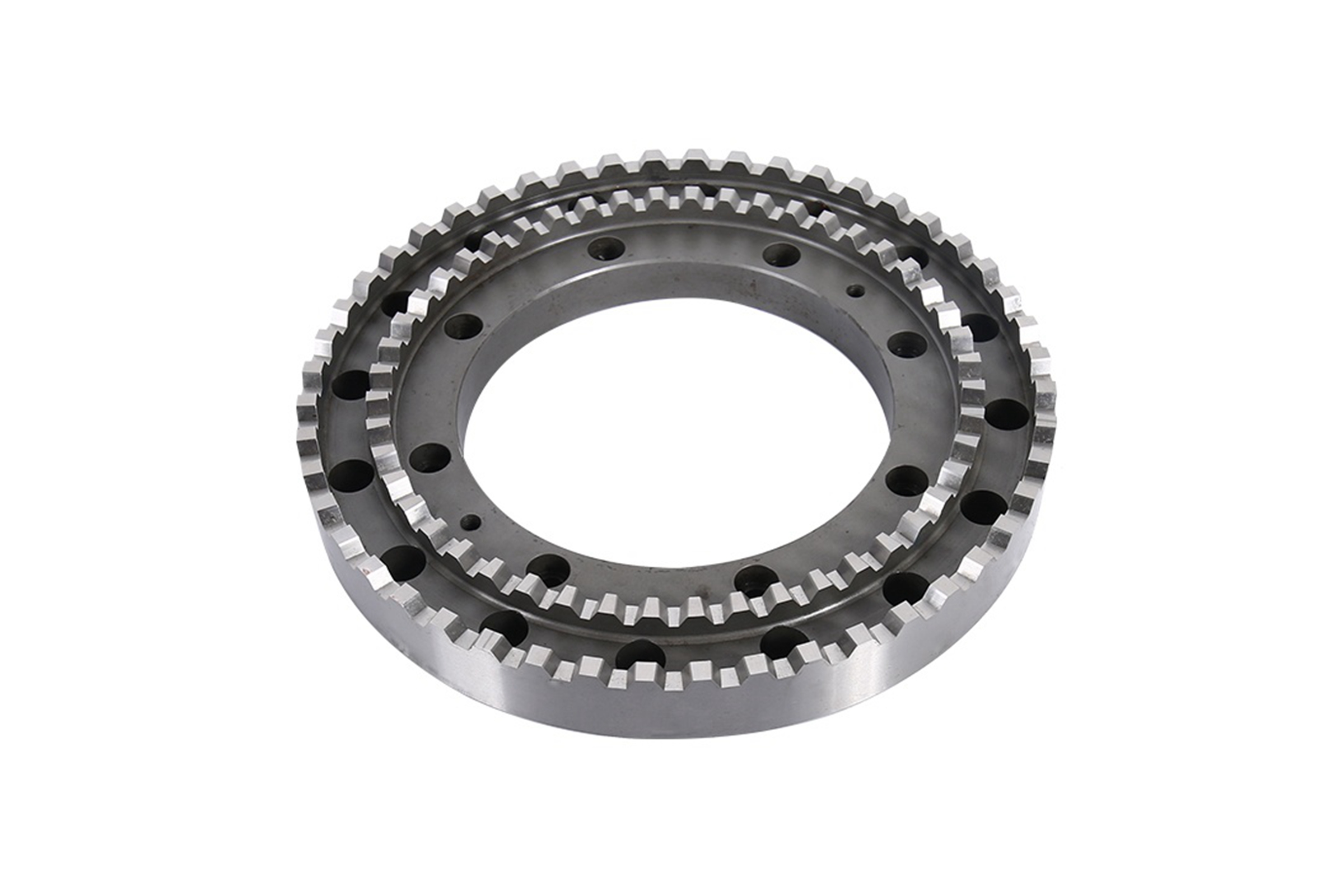Superalloy Powder Metallurgy Turbine Disk
Introduction
Superalloy powder metallurgy turbine disks are engineered for high-performance aerospace and industrial applications, featuring exceptional tensile strengths (1200–1500 MPa), creep resistance at temperatures up to 750°C, and precise dimensional tolerances within ±0.01 mm. At Neway AeroTech, we leverage advanced powder metallurgy and precision manufacturing to deliver turbine disks meeting the stringent demands of industries including aerospace, power generation, and military and defense.
Our comprehensive production capabilities ensure optimized microstructures, unmatched mechanical properties, and robust reliability under extreme operational conditions.
Core Technology of Superalloy Powder Metallurgy
Powder Atomization: Gas atomization produces spherical superalloy powders (10–100 µm) with precise chemical composition and enhanced purity.
Powder Consolidation (HIP): Hot Isostatic Pressing (HIP) at 150 MPa and ~1150°C achieves dense, uniform microstructures with minimal porosity (<0.1%).
Near-Net Shape Forging: Precision forging at approximately 1100°C forms components close to final dimensions, reducing machining allowances to 2–5 mm.
Advanced Heat Treatment: Controlled cycles (solution treatment at 1150°C, aging at 750–800°C) enhance mechanical properties, achieving optimal tensile strengths of 1200–1500 MPa.
Precision CNC Machining: High-precision CNC machining guarantees final tolerances within ±0.01 mm, ensuring exceptional part accuracy.
Surface Treatments: Application of Thermal Barrier Coatings (TBC) significantly improves high-temperature oxidation resistance and overall component life.
Material Characteristics of Powder Metallurgy Superalloys
Property | Specification |
|---|---|
Common Alloys | Rene 88, Rene 95, Udimet 720, FGH97 |
Tensile Strength | 1200–1500 MPa |
Yield Strength | ≥900 MPa |
Fatigue Strength | Excellent (≥30,000 cycles at ~700°C) |
Creep Resistance | Exceptional performance at 750°C |
Oxidation Resistance | Outstanding |
Operating Temperature | Up to 750°C |
Dimensional Accuracy | ±0.01 mm |
Case Study: Superalloy Powder Metallurgy Turbine Disk
Project Background
A leading aerospace engine manufacturer required turbine disks capable of maintaining mechanical integrity at high temperatures (~750°C) and rotational speeds (up to 15,000 RPM), demanding superior fatigue and creep resistance. Superalloy powder metallurgy provided the optimal solution for these challenging requirements.
Common Turbine Disk Models and Applications
High-Pressure Turbine Disks: Critical for commercial aircraft engines, operating reliably at temperatures up to 750°C and rotational speeds exceeding 15,000 RPM.
Intermediate-Pressure Turbine Disks: Engineered for balanced strength and durability, providing excellent performance in extended flight operations at ~700°C.
Low-Pressure Turbine Disks: Essential in long-service engines, maintaining structural integrity over extensive operational cycles (30,000+) at temperatures around 650–700°C.
Industrial Gas Turbine Disks: Designed for continuous-duty power plants, offering exceptional creep resistance and minimal maintenance at high thermal cycles.
Selection and Structural Features of Typical Turbine Disk
Materials such as Rene 95 and Udimet 720 were selected for their outstanding creep and fatigue resistance. Design features include optimized bore shapes, minimal stress concentrations, and uniform grain microstructures enhancing durability.
Turbine Disk Component Manufacturing Solution
Alloy Powder Production: Gas-atomized powders (10–100 µm) ensure controlled chemical composition, optimal flowability, and excellent mechanical performance consistency.
Hot Isostatic Pressing: HIP consolidation at 1150°C under 150 MPa achieves full densification, eliminating internal porosity below 0.1%.
Precision Forging: Near-net shape forging at ~1100°C refines the microstructure and minimizes machining allowances, enhancing dimensional accuracy within ±0.5 mm.
Heat Treatment Optimization: Customized thermal cycles (solution treatment at 1150°C, aging at ~760–800°C) enhance mechanical strength and fatigue life significantly.
CNC Precision Machining: Final machining to stringent tolerances (±0.01 mm) ensures geometric precision, reducing stress risers and enhancing operational reliability.
Surface Enhancement: Thermal Barrier Coating application provides increased thermal insulation and oxidation protection at high temperatures.
Non-Destructive Inspection (NDT): Radiographic (X-ray) and ultrasonic inspections assure internal defect-free standards compliance.
Comprehensive Validation Testing: Rigorous fatigue, creep, and tensile testing confirms performance under operational conditions and compliance with aerospace specifications.
Core Manufacturing Challenges
Achieving precise dimensional accuracy (±0.01 mm)
Controlling microstructural uniformity and grain growth
Minimizing internal porosity (<0.1%)
Ensuring exceptional fatigue and creep performance under operational stresses
Results and Verification
Dimensional Verification: Measurements via Coordinate Measuring Machine (CMM) verified precision tolerances consistently within ±0.01 mm.
Mechanical Strength Validation: Achieved tensile strength targets between 1200–1500 MPa and yield strengths above 900 MPa, surpassing initial requirements.
Fatigue and Creep Testing: Extended fatigue life validated over 30,000 operational cycles at temperatures up to 750°C, with excellent creep resistance performance.
Non-Destructive Testing: Comprehensive radiographic and ultrasonic evaluations confirmed zero internal defects, ensuring maximum component reliability.
Operational Testing: Successful simulated operational tests demonstrated reliability, meeting or exceeding customer expectations for turbine performance.
Surface Quality Confirmation: Surface roughness consistently maintained below Ra 1.6 µm, significantly enhancing aerodynamic efficiency and wear resistance.
FAQs
What are the primary advantages of superalloy powder metallurgy turbine disks?
Which superalloys does Neway AeroTech commonly use for turbine disk manufacturing?
How does Neway AeroTech ensure precise dimensional accuracy in turbine disks?
What testing methods does Neway AeroTech utilize to ensure turbine disk quality and reliability?
Can turbine disks be customized according to specific performance requirements at Neway AeroTech?

